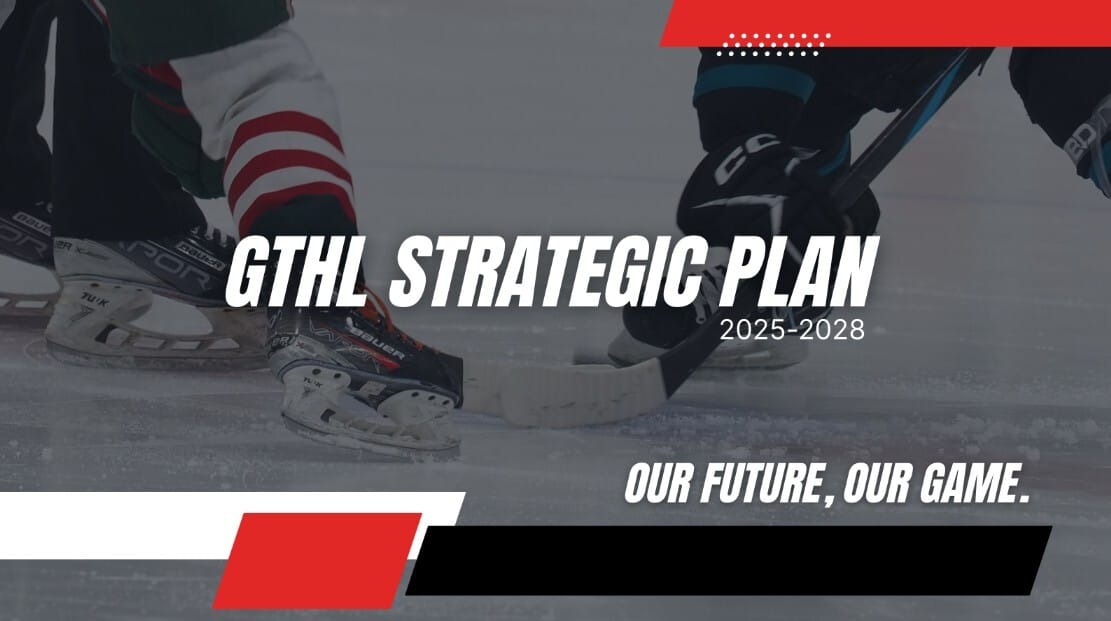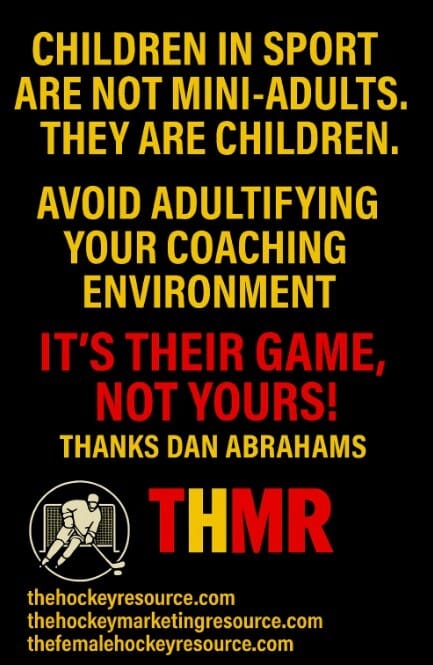- The Hockey Resource Newsletter
- Posts
- GTHL - The largest single amateur hockey league in the world
GTHL - The largest single amateur hockey league in the world
Welcome to the New GTHL Website!

Smarter Marketing Starts Here
Most marketers waste money on channels that don’t actually drive results. The secret? Incrementality.
Our free ebook, Unlocking Incrementality: A Guide for Marketing Success, shows you how to measure what really moves the needle—so you can stop guessing and start scaling.
Inside, you’ll discover:
The difference between attribution and true incrementality
Proven testing methods to measure real impact
How to double down on the channels that actually work
Case studies from top brands already seeing outsized ROI
Don’t just run campaigns. Run campaigns that count.
GTHL HISTORY
Formed in 1911 by founder Frank D. Smith, the Toronto Hockey League (now the Greater Toronto Hockey League) was a dream turned reality for innumerable boys in the beginning of the Twentieth Century. Surrounded by other equally dedicated men who volunteered their time in serving to direct and guide the organization from its infancy, Mr. Smith, who led the League through its first 50 years as General Secretary-Treasurer, saw the THL become the largest single minor amateur hockey league in the world.
Even by the end of World War I, the THL continued to break all growth records. This was a surprise to everyone considering the great number of play- ers who had gone overseas from Senior and Intermediate ranks. Increases in membership were however realized in Junior, Juvenile, and Midget divisions due to the fact that players in these series were too young for military purposes.
Worthy of mention is the fact that during the 1920’s, the THL had between 8 and 12 ladies Senior and Intermediate Teams in any given year.
During the crucial years of World War II, the League was an active participant in the Sports Service League for Canadian soldiers, sailors and airmen.
As the years of growth continued, the League produced many hockey greats such as Charlie and Lionel Conacher, Franke Selke Jr., Bill Durnan, Bill Quack- Enbush, Red Kelly, Sid Smith, Frank Mahovlich, Carl Brewer and Bob Pulford to name a token few. Other GTHL graduates include Rick Middleton, Steve Shutt, Paul Coffey, Adam Graves, Brendan Shanahan, Eric Lindros, Jason Spezza, Rick Nash, Michael Cammalleri, Mark Giordano, Brent Burns, John Tavares, Tyler Seguin, P.K. Subban, and Alex Pietrangelo. More recent graduates include Connor McDavid, Mitchell Marner, Jason Robertson, Anthony Cirelli, Bo Horvat, Jack and Quinn Hughes, Owen Power and Shane Wright. In fact, current records verify that over the past decade, each year there have been at least 65 NHL players who were graduates of the GTHL system.
Back in the early 1960s, the membership of the League had grown to over 20,000 youth playing on direct Teams. Today, the GTHL, formerly the Metropolitan Toronto Hockey League (1972-1998), has in excess of 35,000 participants including affiliated Teams in a territory defined as the Lake Ontario Region, which in addition to Toronto, Vaughan, Markham and Mississauga includes participants from Oakville, Brampton, Richmond Hill, and Ajax- Pickering.
During its period of growth since 1960, the GTHL began to encounter another growth factor, commonly referred to as “rising costs”. While maintaining its stability, the GTHL overhead costs have risen substantially in the past 30 years to the point where operating costs for the 2022-2023 season exceeded $10,000,000. Game ice is the single largest expense incurred by the league.
In the 2022-2023 season, game ice cost $6.76 million, which was a 33% increase over what the league paid in the 2012-2013 season. The League’s very existence seems a small miracle in itself when one realizes that the GTHL has always remained self-sufficient without subsidization from any government body. A massive undertaking by any standards, the GTHL today estimates that with more sophisticated coaching, development programs, and larger Club managements required to cope with all the operational necessities, there is at least one active volunteer for every three registered hockey players. Since 1911, over 600,000 volunteers have contributed to the development of minor hockey in the Greater Toronto area.
GTHL COMMUNICATIONS
The GTHL is a unique and complex body involving literally tens of thousands of people at the various levels: players, parents, management and volunteers. Constituting a significant percentage of the minor hockey registrations within Hockey Canada, the GTHL, as the largest single amateur hockey league in the world, offers a phenomenal marketing area to corporations seeking new avenues of exposure.
As such, the GTHL, while adopting a cautious policy geared so as not to over-commercialize the intent and purpose of amateur hockey, welcomes reputable commercial sponsorship of certain approved concepts or programs which are deemed mutually beneficial to both amateur hockey support and the sponsor’s image.
Daily News for Curious Minds
Be the smartest person in the room by reading 1440! Dive into 1440, where 4 million Americans find their daily, fact-based news fix. We navigate through 100+ sources to deliver a comprehensive roundup from every corner of the internet – politics, global events, business, and culture, all in a quick, 5-minute newsletter. It's completely free and devoid of bias or political influence, ensuring you get the facts straight. Subscribe to 1440 today.

TORONTO, ON – The Greater Toronto Hockey League today released its recently adopted Strategic Plan for 2025–2028, a comprehensive roadmap designed to strengthen community hockey in the Greater Toronto Area while advancing inclusivity, transparency, player development, and long-term growth.
Developed through extensive consultation with players, parents, volunteers, coaches, member association representatives, and community partners, the plan reflects the voices and experiences of hundreds across the GTHL community.
The Strategic Plan is built on four pillars:
Trust: Enhancing transparency, governance, and accountability across the League.
Belonging: Fostering a safe, inclusive, and welcoming environment for all participants.
Achievement: Supporting excellence in leadership, player development, and competition.
Growth: Building sustainability through innovation, strong partnerships, and brand development.
“The new Strategic Plan is our commitment to the GTHL community. The plan is built on four pillars of Trust, Belonging, Achievement, and Growth, which collectively strive to deliver safe, inclusive, and excellent hockey experiences for every participant across the GTA,” said Scott Oakman, GTHL Executive Director and Chief Operating Officer. “This plan moves from promise to practice with a clear roadmap and measurable accountability — through committees, playbooks, and Key Performance Indicators (KPIs) — so families, volunteers, and all stakeholders can see our progress and help shape what comes next.”
The Strategic Plan outlines measurable goals, including enhanced reporting and accountability mechanisms, a focus on diversity, equity, and inclusion (DEI) initiatives, investments in SafeSport and player well-being, and the expansion of accessible hockey programs across the Greater Toronto Area.
As part of this launch, the GTHL is pleased to announce the appointment of Stephanie Coratti as the League’s first Director, Strategy and Communications. In this new role, Stephanie will oversee the execution of the Strategic Plan, track and measure outcomes, and ensure transparent reporting to all GTHL stakeholders.
Stephanie transitions into this position from her role as Senior Manager, Communications and Marketing, where she redefined the League’s marketing and communications approach, successfully led impactful partnerships with organizations such as You Can Play, Movember, and the Canadian Mental Health Association, and is currently leading the implementation of the GTHL Parent Information Centre (PIC). She also introduced new programs that enhanced the experience of players and families across the League. Stephanie’s leadership, vision, and proven ability to deliver meaningful results make her ideally suited to guide the GTHL into its next phase of growth and accountability.
Strategic Plan: 2025-2028


